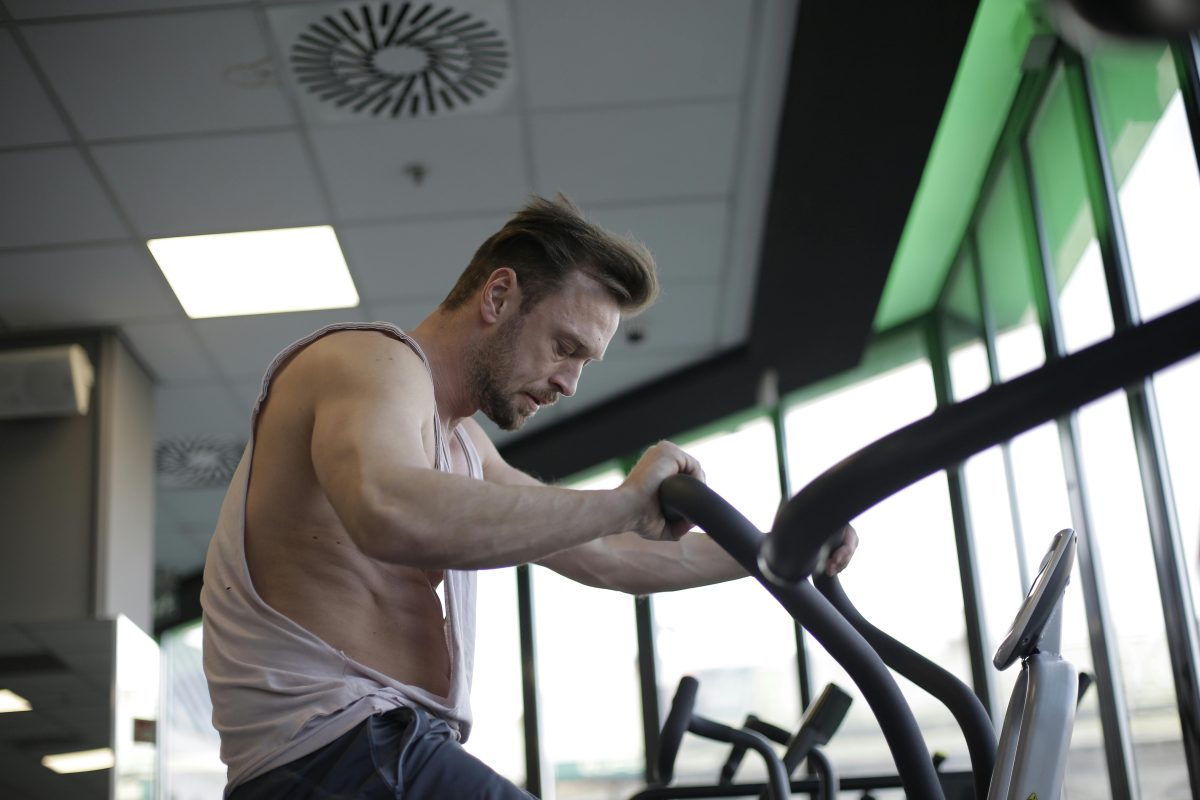Last Updated on: 14th July 2024, 09:32 am
Introduction to Sauna Use in Fitness Regimens

The tradition of sauna use dates back centuries, originating from Finland where it was revered not just as a means of cleansing but as a way of life. Fast forward to today, and saunas have evolved into a cornerstone of fitness and wellness cultures around the globe. There are primarily three types of saunas: traditional, which uses wood or electric heaters to warm the air; infrared, which uses light to create heat; and steam, which generates moist heat. Each offers a unique experience and benefits.
Among athletes and fitness enthusiasts, the popularity of sauna use has surged. It’s not just about relaxation. The draw comes from the myriad of health benefits attributed to regular use, including improved circulation, muscle recovery, and even enhanced cardiovascular health. This has led to saunas becoming a staple in gyms and sports facilities, with many incorporating them into their post-workout routines.
Understanding the different sauna types and their benefits is crucial for anyone looking to integrate sauna sessions into their fitness regimen. It’s a practice steeped in history, yet at the forefront of modern wellness trends.
Understanding the Benefits of Sauna Use After Workouts

Stepping into a sauna after a rigorous workout isn’t just a luxury; it’s a practice rooted in science that enhances physical and mental well-being. The heat envelops your body, working its magic in numerous ways.
- Enhanced Muscle Recovery and Reduced Soreness: Firstly, the warmth aids in muscle recovery. It does so by increasing blood flow, which in turn speeds up the body’s natural repair processes. This means less soreness and quicker recovery times, allowing you to get back to your training sooner.
- Improved Circulation and Cardiovascular Health: Moreover, the heat from the sauna expands blood vessels, improving circulation. This not only aids in muscle recovery but also boosts overall cardiovascular health. Regular sauna sessions can mimic the effects of mild exercise, making your heart stronger and more efficient.
- Detoxification Through Increased Sweating: Detoxification is another key benefit. Sweating it out in a sauna helps flush toxins from the body. As your body temperature rises, your sweat glands kick into high gear, cleansing your skin and system.
- Boost in Immune System Function: Additionally, the heat exposure can stimulate the production of white blood cells, bolstering your immune system. This means you’re not just recovering faster from workouts but also building a stronger defense against illnesses.
- Psychological Benefits: Stress Reduction and Relaxation: Finally, the psychological benefits cannot be overstated. The sauna is a sanctuary where stress melts away, and relaxation takes over. This mental reset is invaluable, helping you to tackle challenges with renewed vigor and clarity.
Incorporating sauna sessions into your post-workout routine offers a holistic approach to fitness and wellness. It’s a time-tested method that not only enhances physical recovery but also promotes a healthy mind. As you embrace this practice, remember to listen to your body and stay hydrated, ensuring you reap all the benefits while minimizing risks.
The Science Behind Sauna Use and Physical Performance

Recent studies shed light on the fascinating interplay between sauna use and athletic performance. At its core, the practice of heat therapy, commonly experienced through sauna sessions, has been linked to notable improvements in endurance and muscle adaptation. This is not just about feeling good; it’s about scientifically-backed enhancements to physical performance.
- Improving Endurance: One key mechanism through which sauna use boosts performance is by improving endurance. The heat acclimatization process helps the body to better regulate its temperature, enhance blood flow to muscles, and increase plasma volume. This means athletes can perform at a high level for longer periods, pushing the boundaries of fatigue.
- Stimulating Muscle Adaptation: Moreover, sauna use stimulates muscle adaptation in a way that is remarkably beneficial for athletes. The heat stress triggers a boost in muscle regrowth and repair, paving the way for stronger, more resilient muscle fibers. This is partly due to the increased levels of heat shock proteins, a critical player in muscle repair and growth. These proteins act as cellular guardians, ensuring that muscles recover more efficiently from the stresses of exercise.
The role of heat shock proteins extends beyond mere muscle repair. They are pivotal in preventing protein degradation and enhancing the synthesis of new proteins, leading to muscle growth. This biological response to heat stress from sauna use mirrors the body’s reaction to exercise, but with the added benefit of accelerated muscle recovery and growth.
Integrating sauna sessions into your post-workout routine can, therefore, offer a dual advantage. Not only do you get to enjoy the immediate relaxation and detoxification benefits, but you also set the stage for improved physical performance. It’s a practice that champions both recovery and resilience, making it a valuable addition to any athlete’s regimen.
Precautions and Safety Measures for Sauna Use

While the allure of sauna sessions post-workout is undeniable, it’s paramount to approach this practice with mindfulness and caution. Ensuring safety and maximizing benefits hinge on adhering to a few key precautions.
- Hydration: The Cornerstone of Sauna Safety: Hydration cannot be overstressed. Before stepping into the sauna, it’s crucial to drink plenty of water. This preps your body for the inevitable sweat loss, helping to prevent dehydration. Post-session, replenishing fluids is just as important to restore what’s been lost. This simple yet vital step ensures your sauna experience is both safe and rejuvenating.
- Heeding the Signs of Overheating and Dehydration: Listening to your body is non-negotiable. Signs of overheating, such as dizziness, nausea, or excessive sweating, signal it’s time to exit. Similarly, symptoms of dehydration like thirst, dry mouth, or lightheadedness demand immediate attention. Recognizing these signs early safeguards against potential health risks.
- Session Duration and Frequency: Finding the Balance: There’s a sweet spot for sauna session length and frequency that maximizes benefits while minimizing risks. Generally, 15-20 minutes is recommended for a session, with seasoned users sometimes extending up to 30 minutes. Limiting sessions to 3-4 times a week allows the body to enjoy the benefits without undue stress.
- Special Considerations: When Extra Caution is Needed: Individuals with certain health conditions, including heart disease or high blood pressure, should exercise extra caution. Consulting a healthcare provider before incorporating sauna sessions is wise. Pregnant women, too, are advised to seek medical advice, as sauna use can pose risks during pregnancy.
Embracing sauna sessions as part of your fitness routine can be incredibly beneficial, but it’s essential to prioritize safety and listen to your body. By staying hydrated, recognizing your limits, and considering any personal health conditions, you can enjoy the myriad benefits of sauna use while keeping risks at bay.
Integrating Sauna Use Into Your Workout Routine

Integrating sauna sessions into your post-workout routine can significantly enhance your recovery process and overall fitness results. The key is in the timing and combination with other recovery techniques. Ideally, sauna use should follow your cool-down period, allowing your body to transition smoothly from the exertion of exercise to the relaxation and recovery phase. A 15-20 minute session is optimal, providing enough time to reap the benefits without overexposure.
Combining sauna sessions with other recovery methods, such as stretching and foam rolling, can amplify the benefits. Stretching aids in flexibility and helps prevent muscle stiffness, while foam rolling targets muscle tightness and knots. Together with sauna use, these practices promote muscle recovery, enhance circulation, and facilitate the removal of toxins from the body.
Personalizing sauna use is crucial. Your fitness goals, health status, and how your body responds to heat will influence how you integrate sauna sessions into your routine. For those focusing on endurance, regular sauna use can help improve heat acclimatization, enhancing performance in hot conditions. Strength-focused athletes might find the muscle recovery benefits particularly valuable. However, it’s important to start gradually and adjust based on your body’s feedback. Always prioritize hydration and listen to your body’s signals to avoid overheating and dehydration.
Remember, the goal is to support your body’s recovery and health. By thoughtfully incorporating sauna sessions into your fitness regimen, you can enjoy the myriad benefits while minimizing risks. Whether you’re looking to boost your performance, speed up recovery, or simply enhance your well-being, sauna use can be a valuable addition to your wellness journey.
Common Myths and Misconceptions About Sauna Use

Debunking Myths About Weight Loss and Sauna Use
- Temporary Weight Loss: Primarily due to water loss through sweat, not fat reduction. Weight returns upon rehydration.
- Not a Replacement: Saunas should not replace exercise and a balanced diet for weight management.
Clarifying Misconceptions About Sauna Use and Muscle Gain
- Improves Circulation: While saunas aid in muscle recovery, they do not inherently build muscle.
- Complementary Practice: Muscle gains are achieved through resistance training and proper nutrition; saunas help in recovery.
Addressing Concerns About Sauna Use and Skin Health
- Skin Cleansing: Sweating during a sauna session can help cleanse the pores and flush out impurities.
- Skincare Routine: Important to cleanse before and after sauna use to prevent potential irritation from sweat and toxins.
Understanding these truths about sauna use can enhance your post-workout recovery and overall wellness experience. Saunas offer numerous benefits, but it’s essential to have realistic expectations and to use them as part of a comprehensive approach to health and fitness.
In Closing
Sauna use post-workout enhances recovery and wellness. It bridges relaxation with resilience, offering a holistic approach to fitness. Through improved circulation, detoxification, and muscle recovery, sauna sessions complement the physical exertion of workouts, promoting both immediate relief and long-term health benefits. Embrace this ancient practice as a modern-day ally in your fitness journey, prioritizing safety and personalization to unlock its full potential. Let the warmth of the sauna inspire a commitment to well-being, encouraging a balanced and rejuvenated path forward.
Sauna Use After Workouts: Benefits and Precautions FAQs
Yes, using a sauna after a heavy workout can be beneficial. It helps in muscle relaxation and can significantly reduce muscle soreness. Additionally, the heat improves circulation, aiding in the body’s recovery process.
If you have a heart condition, it’s crucial to consult with a healthcare provider before using a sauna after workouts. The increased heart rate and blood pressure from both exercise and sauna use could be risky for some heart conditions. A healthcare provider can offer personalized advice based on your specific health situation.
Sauna use can assist in weight loss efforts after workouts by promoting additional calorie burn through increased heart rate. However, the weight lost immediately after sauna use is primarily water weight, which is regained once you rehydrate. Consistent use, combined with exercise and a healthy diet, can contribute to long-term weight management.
Yes, sauna use after workouts can aid in muscle recovery. The heat from the sauna increases blood flow to the muscles, which helps in the removal of lactic acid and other byproducts of exercise. This process can reduce muscle soreness and improve recovery times.
Sauna use significantly affects hydration levels after a workout by increasing sweat production, which leads to fluid loss. It’s essential to drink plenty of water before going into the sauna, during the sauna session if possible, and after exiting to replenish lost fluids. Failure to adequately rehydrate can lead to dehydration, affecting recovery and overall health.
The ideal time to stay in the sauna after exercising is between 15 to 20 minutes. This duration is sufficient to enjoy the benefits without overexposing yourself to heat. Exceeding this time can lead to dehydration and overheating, especially after a workout when your body is already stressed.
It is generally better to use a sauna after workouts. Using a sauna before exercising can lead to muscle relaxation that might reduce the effectiveness of your workout or increase the risk of injury. After workouts, the sauna can help in muscle recovery and relaxation, making it a better choice.
Going into a sauna after cardio exercise is generally safe. It can help in further enhancing your cardiovascular conditioning by improving circulation and increasing heart rate similar to moderate exercise. However, staying hydrated is crucial as the body loses a significant amount of fluids through sweat.
It’s important to stay hydrated, limit your time spent in the sauna, and listen to your body’s signals. Dehydration is a significant risk, so drinking water before, during, and after sauna use is essential. If you feel dizzy, nauseous, or overly tired, exit the sauna immediately.
It’s best to wear minimal clothing or a towel in the sauna after working out. This allows your skin to breathe and facilitates better sweating, which helps in detoxification and relaxation. Wearing too much clothing can trap heat and sweat, preventing the body from cooling effectively.
Orlando is a all round athlete from Australia, now resident in Germany. His sports of passion of American Football(Offensive line), weight training and indoor rock climbing where he uses his 195cm wing span to his advantage.



